Guijun Ma
A Novel GAN-based Fault Diagnosis Approach for Imbalanced Industrial Time Series
Apr 01, 2019



Abstract:This paper proposes a novel fault diagnosis approach based on generative adversarial networks (GAN) for imbalanced industrial time series where normal samples are much larger than failure cases. We combine a well-designed feature extractor with GAN to help train the whole network. Aimed at obtaining data distribution and hidden pattern in both original distinguishing features and latent space, the encoder-decoder-encoder three-sub-network is employed in GAN, based on Deep Convolution Generative Adversarial Networks (DCGAN) but without Tanh activation layer and only trained on normal samples. In order to verify the validity and feasibility of our approach, we test it on rolling bearing data from Case Western Reserve University and further verify it on data collected from our laboratory. The results show that our proposed approach can achieve excellent performance in detecting faulty by outputting much larger evaluation scores.
Wasserstein Distance based Deep Adversarial Transfer Learning for Intelligent Fault Diagnosis
Mar 02, 2019


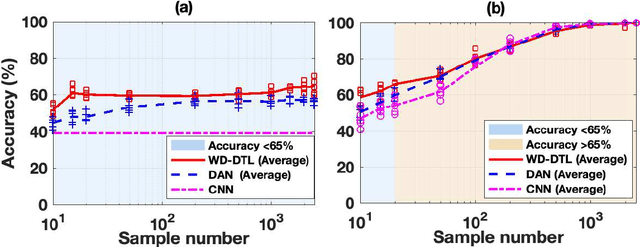
Abstract:The demand of artificial intelligent adoption for condition-based maintenance strategy is astonishingly increased over the past few years. Intelligent fault diagnosis is one critical topic of maintenance solution for mechanical systems. Deep learning models, such as convolutional neural networks (CNNs), have been successfully applied to fault diagnosis tasks for mechanical systems and achieved promising results. However, for diverse working conditions in the industry, deep learning suffers two difficulties: one is that the well-defined (source domain) and new (target domain) datasets are with different feature distributions; another one is the fact that insufficient or no labelled data in target domain significantly reduce the accuracy of fault diagnosis. As a novel idea, deep transfer learning (DTL) is created to perform learning in the target domain by leveraging information from the relevant source domain. Inspired by Wasserstein distance of optimal transport, in this paper, we propose a novel DTL approach to intelligent fault diagnosis, namely Wasserstein Distance based Deep Transfer Learning (WD-DTL), to learn domain feature representations (generated by a CNN based feature extractor) and to minimize the distributions between the source and target domains through adversarial training. The effectiveness of the proposed WD-DTL is verified through 3 transfer scenarios and 16 transfer fault diagnosis experiments of both unsupervised and supervised (with insufficient labelled data) learning. We also provide a comprehensive analysis of the network visualization of those transfer tasks.
Artificial Intelligent Diagnosis and Monitoring in Manufacturing
Dec 17, 2018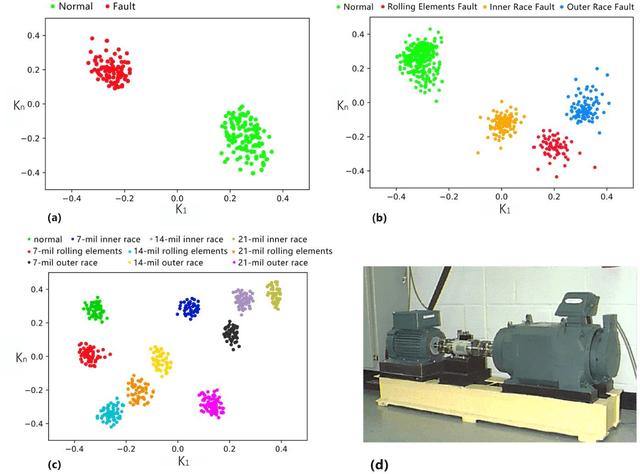
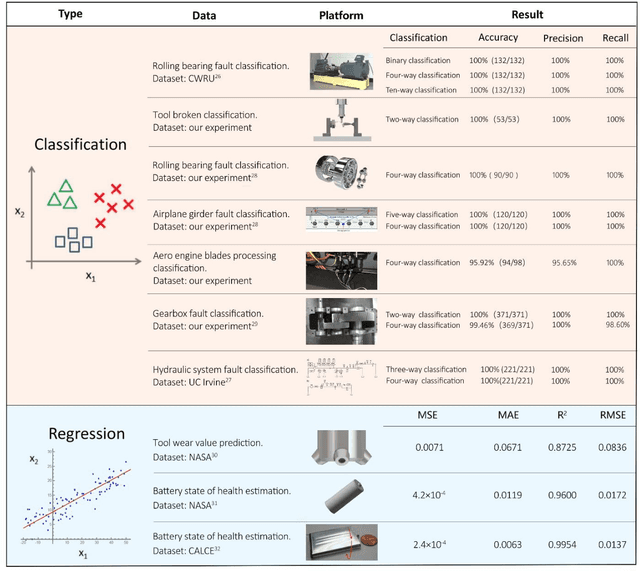
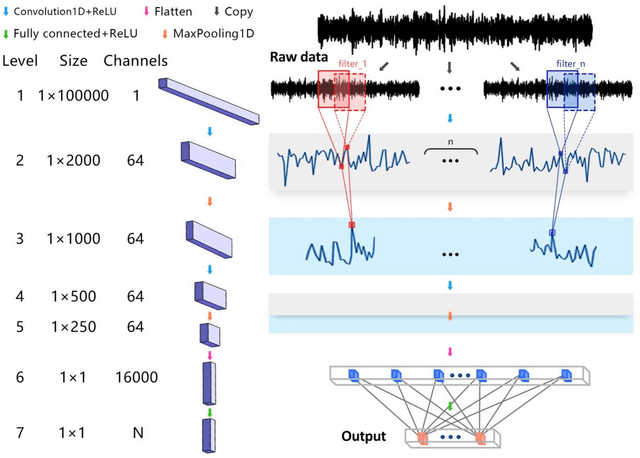
Abstract:The manufacturing sector is heavily influenced by artificial intelligence-based technologies with the extraordinary increases in computational power and data volumes. It has been reported that 35% of US manufacturers are currently collecting data from sensors for manufacturing processes enhancement. Nevertheless, many are still struggling to achieve the 'Industry 4.0', which aims to achieve nearly 50% reduction in maintenance cost and total machine downtime by proper health management. For increasing productivity and reducing operating costs, a central challenge lies in the detection of faults or wearing parts in machining operations. Here we propose a data-driven, end-to-end framework for monitoring of manufacturing systems. This framework, derived from deep learning techniques, evaluates fused sensory measurements to detect and even predict faults and wearing conditions. This work exploits the predictive power of deep learning to extract hidden degradation features from noisy data. We demonstrate the proposed framework on several representative experimental manufacturing datasets drawn from a wide variety of applications, ranging from mechanical to electrical systems. Results reveal that the framework performs well in all benchmark applications examined and can be applied in diverse contexts, indicating its potential for use as a critical corner stone in smart manufacturing.
Online Bearing Remaining Useful Life Prediction Based on a Novel Degradation Indicator and Convolutional Neural Networks
Dec 08, 2018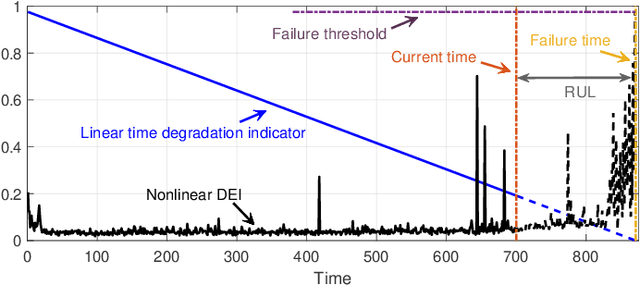
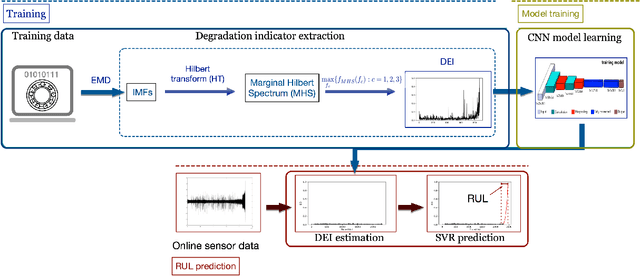
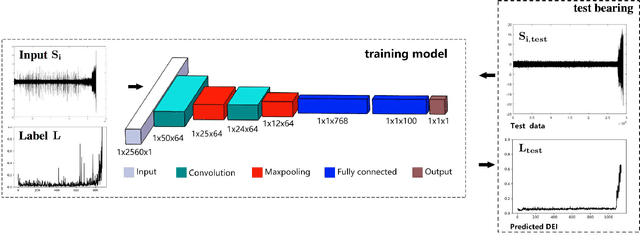
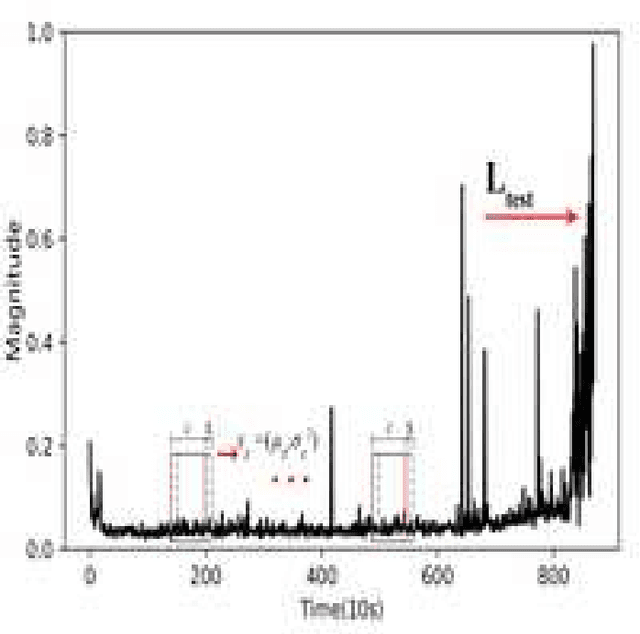
Abstract:In industrial applications, nearly half the failures of motors are caused by the degradation of rolling element bearings (REBs). Therefore, accurately estimating the remaining useful life (RUL) for REBs are of crucial importance to ensure the reliability and safety of mechanical systems. To tackle this challenge, model-based approaches are often limited by the complexity of mathematical modeling. Conventional data-driven approaches, on the other hand, require massive efforts to extract the degradation features and construct health index. In this paper, a novel online data-driven framework is proposed to exploit the adoption of deep convolutional neural networks (CNN) in predicting the RUL of bearings. More concretely, the raw vibrations of training bearings are first processed using the Hilbert-Huang transform (HHT) and a novel nonlinear degradation indicator is constructed as the label for learning. The CNN is then employed to identify the hidden pattern between the extracted degradation indicator and the vibration of training bearings, which makes it possible to estimate the degradation of the test bearings automatically. Finally, testing bearings' RULs are predicted by using a $\epsilon$-support vector regression model. The superior performance of the proposed RUL estimation framework, compared with the state-of-the-art approaches, is demonstrated through the experimental results. The generality of the proposed CNN model is also validated by transferring to bearings undergoing different operating conditions.
 Add to Chrome
Add to Chrome Add to Firefox
Add to Firefox Add to Edge
Add to Edge